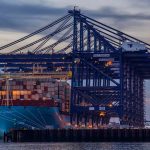AI rules the roost
AI rules the roost
Day by day, artificial intelligence (AI) is being used across more industries. Although it had a slow start in freight forwarding, AI is getting ready to rule the roost in this sector …
A tad over four years ago, Matt Leonard, a reporter at Supply Chain Dive – a division of the online business-to-business news organisation Industry Dive – highlighted that only 12% of supply chain professionals were using AI in their operations. He referenced the 2020 Material Handling Industry Annual Industry Report, which surveyed more than 1,000 supply chain professionals, reporting that 60% of the respondents expected they would use AI within the following five years.
It hasn’t taken that long, as AI is already becoming more commonplace in the freight forwarding world. Two stellar examples come from Raft and DHL Express. The former, based in London, is one of the world’s largest AI-powered logistics platforms, used by more than 50 logistics providers – companies that together help run 80% of the 1,000 global supply chains. Each year, more than 10,000 users manage over five million shipments on the platform, representing every commodity, transit mode, and trade lane.
Raft’s platform had reached over five billion data points and labelled logistics documents – all verified by human experts – by June this year. These were used to train machine learning models and improve the platform’s generative AI, enabling it to process transactions at a rate of thousands per second.
The internet typically serves as the knowledge source for examples of public AI innovation that have captured the world’s attention. However, it isn’t a viable AI learning source in complex business sectors such as global logistics, where specialised processes vary by company. In private supply chain environments, high volumes of real world, hard-to-get transactional data are a critical component in ensuring that AI-enabled automation learns and executes with precision and scale.
“After decades of effort and hundreds of billions of dollars of investment, the logistics industry is still reliant on emails, PDFs, and spreadsheets to keep goods moving,” says James Coombes, CEO of Raft. “We are on a mission to unleash the power of AI on global logistics and put an end to manual, disconnected processes once and for all. The transactional scale on the Raft platform, along with our active customer base, demonstrates we are well on our way to achieving that goal. The AI freight train has left the station and there’s a lot of excitement and hope about where things are headed.”
DHL Express has also added its cart to the tracks by further enhancing its own AI-powered platform, My Global Trade Services (MyGTS), with a new “trade lane comparison” feature. MyGTS is an online self-serve portal that helps users easily retrieve customs information to pre-plan shipments as they access new markets or launch new products. The new feature uses AI and machine learning to provide an overview of the trade agreements in place and estimated duties/taxes which are included in the landed cost (the total cost of getting a product from the factory to a customer’s door) of the different trade routes.
On the platform, users will simply need to indicate the product they are shipping and the desired exporting and importing country or territory. This is especially useful to small and medium enterprises (SMEs), which are often challenged by a lack of internal resources, knowledge, and expertise when trying to navigate a complex landscape of customs regulations and procedures.
“Companies including SMEs are doing what they can to boost business resilience and global presence. However, SMEs tend to be impeded by the intricacies of trade regulations and processes, slowing down their expansion plans,” says Yung Ooi, senior vice president of Asia Pacific for the DHL Express commercial division. “The new trade lane comparison capability helps SMEs enhance their understanding about customs requirements and landed cost. It aligns with our commitment to providing innovative solutions to help SMEs lower major trade barriers and become more confident in cross-border trade activities.”
The integration of AI in the freight forwarding industry is no longer a distant prediction, but rather a present reality. As AI continues to evolve and its adoption expands, the freight forwarding industry stands to benefit from increased automation, improved decision-making, and a significant reduction in operational costs. The examples set by Raft and DHL Express underscore the transformative impact AI can have, heralding a new era in which technology-driven solutions will dominate the logistics landscape.
Published by
Jaco de Klerk
focusmagsa




